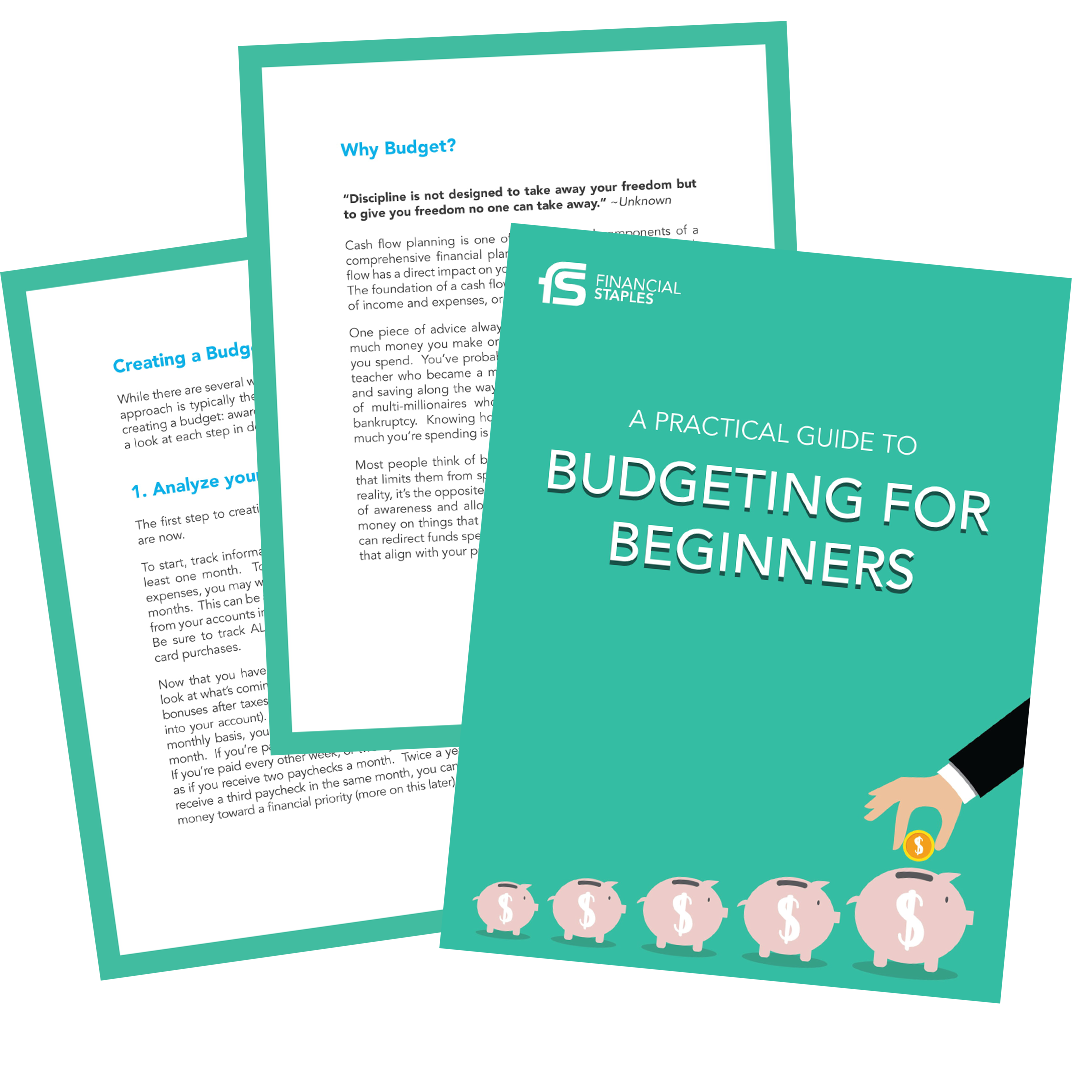Many public tech companies offer an Employee Stock Purchase Plan (ESPP) as an employee benefit. ESPPs allow employees to purchase shares of company stock at a discount through payroll deductions. On the surface, the decision to participate in an ESPP is a no-brainer. After all, the discount is free money! Suppose you are juggling financial priorities or receiving other forms of equity compensation (like restricted stock units or stock options). In that case, the decision to participate in an ESPP is a bit more complicated. Before you enroll in your company’s plan, here are some things to consider.
ESPP Basics
Let’s start by explaining how ESPPs work. As I mentioned, these plans allow you to purchase shares of company stock at a discount through after-tax payroll deductions. ESPPs have an offering period when you can sign up for the plan (typically 12, 18 or 24 months). Once enrolled, you choose a percentage of your income that you want your company to deduct per pay period. Most plans limit your contribution to a certain percentage of your income (typically 10 or 15%) and have a maximum annual purchase limit of $25,000. Your company holds your payroll deductions for six months at a time (known as the purchase period) and buys the stock at the end of each six-month period. This contribution and purchase cycle repeats every six months until the end of the offering period.
Example: Your company offers an ESPP with a 12-month offering period giving you the option to enroll at the end of May and November each year. You enroll in May and elect to contribute 10% of your $150,000 salary to the plan. If you’re paid bimonthly, $625 is deducted from each paycheck over the next six months and your company uses the accumulated $7,500 to purchase stock at the end of this period.
The benefit of ESPPs is the discount, which is typically between 5% and 15% off the fair market value. A second valuable feature in some plans is a lookback provision. With this feature, your company buys the stock for you at a discount to the lower of the offering date price and the purchase date price.
Example: Continuing with the example above, let’s say you enrolled in the plan on May 31st (the offering date) when the stock is valued at $35 per share. After six months of payroll deductions, your company buys the stock on December 15th (the purchase date) when the stock is valued at $40 per share. With the lookback provision, your company buys shares for $29.75 per share that are worth $35 per share. How? The lower of the two stock values is $35 per share and your 15% discount gets you the stock at $29.75 per share. With the $7,500 you contributed, your company purchases 252 shares and deposits them into your brokerage account.
Now that you have a basic understanding of how ESPPs work, let’s discuss taxes. You only owe taxes when you sell your shares, not when they’re purchased. The discount is always taxed as ordinary income. The type of tax you owe on any gains above the discount depends on how long you hold the stock. This is known as a qualifying or disqualifying disposition.
[Taxes for ESPPs can get a bit complicated. If you don’t want to get into the details, skip to the next section. If you’d like to geek out on tax rules, keep reading.]
A qualifying disposition is when you sell your shares for more than a year after the purchase date and more than two years after the offering date. In this case, any gains above the discount are taxed at capital gains tax rates. If you do not satisfy both requirements for a qualifying disposition (known as a disqualifying position), any gains above the discount are taxed as ordinary income.
Example: Let’s go back to our example where you purchased 252 shares at a 15% discount to $35 per share (in which your discount allowed you to purchase the shares for $29.75 per share). The 15% discount of $5.25 per share is always taxed as ordinary income ($1,323 for 252 shares).
Qualifying Disposition: Holding your shares more than a year after the purchase date and more than two years after the offering date, and the stock price is $45 per share when you sell. You pay long-term capital gains taxes on the gain of $10 per share (the current stock price of $45 per share minus the market value at purchase of $35 per share). Selling 252 shares at $45 per share results in $11,340. You pay ordinary income on $1,323 (as noted above) and long-term capital gains taxes on $2,520 ($10 x 252 shares).
Disqualifying Disposition: You don’t hold your shares long enough to meet the requirements for a qualifying disposition and you sell them when the stock price is $45 per share. You pay ordinary income taxes on $1,323 (as noted above) and you also pay ordinary income taxes on $2,520 ($10 x 252 shares).
When Does it Make Sense to Participate?
An ESPP with a 15% discount is attractive, and the addition of the lookback provision makes it a no-brainer. When deciding if it makes sense to participate, there are two major considerations: your current financial situation and your cash flow.
Before deciding to participate, take an assessment of your current financial situation. Are you at least contributing to your company’s 401(k) up to the match? Do you have at least three months of an emergency fund saved? What about high-interest debt such as credit cards or personal loans? Make sure you’ve covered these basic steps before contributing to an ESPP.
When you participate in an ESPP, your paycheck is reduced by the amount you contribute. Many plans give you the option to stop payroll contributions during the six-month purchase period, but it’s best to decide if you can afford to participate before you enroll. Ideally, you should be in a position where the smaller paycheck does not impact your regular living expenses. Hopefully you’re willing to live on less income or redirect money to the ESPP that you were already saving outside the plan.
There are some situations where ESPPs may not be worth the hassle. If your company’s discount is only 5% and there’s no lookback provision, the additional money you receive from participating is most likely minimal net of taxes (even if you’re contributing the maximum). You have to run the numbers and decide if adjusting your cash flow and remembering to sell the stock every six months is worth the additional money you’ll receive after taxes.
You may be thinking, “What do you mean sell the stock every six months? Shouldn’t I hold the stock so I receive better tax treatment on the gains?” That brings me to the last section…
To Sell or to Hold
After you purchase your ESPP shares, you can decide to keep or sell them. You have three basic options:
- Sell the shares as soon as possible after the purchase date
- Hold the shares and sell before meeting the requirements for a qualifying disposition
- Hold the shares and sell after meeting the requirements for a qualifying disposition
The opportunity to benefit from a lower tax rate on the gains sounds appealing, but don’t let the taxes tempt you into taking on more risk than necessary. From the discount, you’ve already earned a guaranteed return on your investment, and the return is slightly higher if you benefit from the lookback provision. While the value of the stock could increase, there’s also a risk that the stock price goes down. When deciding whether to keep or sell, consider the following:
- Would you buy company stock without an ESPP?
- If you don’t sell the shares as soon as possible after the purchase date, how will you pay the taxes?
- Could the proceeds fund financial goals that you might have if you sell the shares right away?
Having a large portion of your net worth tied to a single stock is very risky, and the risk increases when that single stock is in the company that pays your salary. You may also have other types of equity compensation such as stock options or you already own shares of stock from vested Restricted Stock Units (RSUs). Generally, I recommend having no more than 5-10% of your total investments in a single stock. Remember, don’t put all your eggs in one basket!
Most of my clients could accelerate their short-term financial goals by selling ESPP shares. If this is the case for you, it makes sense to sell the shares as soon as possible after the purchase date. The proceeds can be used to pay off your student loans or help you reach your savings goals faster.
An ESPP with a generous discount and a lookback provision is a no-brainer. Just like the employer match to your 401(k) contributions, ESPP discounts are essentially free money. If you can afford it, contribute the maximum and sell the stock as soon as possible.
Would you like help figuring out if your company’s Employee Stock Purchase Plan is right for you? Let’s chat!
Did you enjoy reading this post? Want financial inspiration, education, and updates delivered straight to your inbox? Sign up for our newsletter!
Disclaimer: This article is provided for general information and illustration purposes only. Nothing contained in the material constitutes tax advice, a recommendation for purchase or sale of any security, or investment advisory services. I encourage you to consult a financial planner, accountant, and/or legal counsel for advice specific to your situation. Reproduction of this material is prohibited without written permission from Chloe Moore, and all rights are reserved. Read the full disclaimer here.


